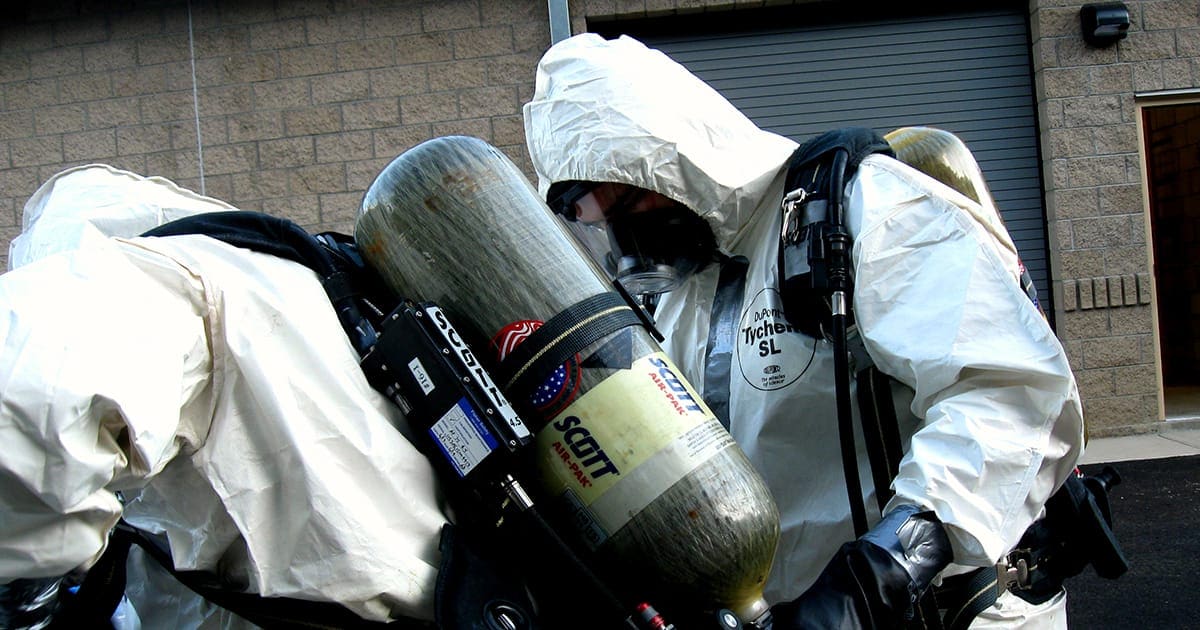Implementing a hazardous waste program in your business is an important step in ensuring the safety of your employees, environment, and public health. Having a comprehensive hazardous waste program in place allows you to store, transport, and dispose of dangerous materials safely and responsibly to minimize. Furthermore, it helps to reduce liability and potential fines resulting from non-compliance with environmental regulations.
What should you do in the event of a spill emergency?
In the event of hazardous materials incidents, it is important to take immediate action. First, you must evacuate the area and alert other personnel to do the same. Then, identify and assess the risk associated with the spilled material and create a plan for cleaning up and disposing of it in accordance with environmental regulations. Finally, contact your local hazardous waste authorities for further instructions on how to properly handle the situation. By quickly taking all necessary precautions, you can help prevent further contamination or injury from occurring.
What are the possible health effects due to exposure to hazardous substances?
Potential health effects due to exposure to hazardous substances can include:
- Respiratory problems, such as difficulty breathing due to inhalation of fumes or dust
- Skin irritation, rashes, and burns caused by contact with the material
- Eye irritation and damage resulting from contact with airborne particles
- Hypertension, headaches, nausea, and dizziness resulting from toxic fumes
- Poisoning and/or long-term health effects related to chronic overexposure to hazardous materials
What should an emergency response program for hazardous materials include?
- Emergency contact information to first responders
- Designated hazardous material storage areas
- Plans for responding to spills and other emergency situations
- Documentation on waste transport and disposal
- Training materials for employees on proper hazardous material handling procedures
- Safety equipment such as protective clothing and respirators
- Regulated standards related to the storage and disposal of hazardous materials
- Local resources for additional help in case of an emergency
Types of hazardous materials incidents?
Hazardous materials incidents can come in many forms, ranging from gas leaks and chemical spills to accidental fires, transportation accidents, and more. Each of these scenarios poses a unique set of risks for people and the environment and requires special attention when developing emergency response plans.
How detailed should an emergency response program be?
The complexity and extent of a hazardous materials emergency preparedness and response program will depend on the type of material being stored or used, as well as the size of the facility. Generally speaking, the larger and more hazardous the material, the more extensive and thorough the program should be. The program should include detailed plans for responding to spills and other emergencies, training materials for employees on proper handling procedures, documentation on waste transport and disposal, and regulations that must be followed. Finally, an emergency contact list should be maintained in case specialized help is needed in an emergency situation.
Who should be responsible for your emergency response program?
Every hazardous materials emergency response program should have a designated person or team in charge of overseeing the program. This individual or team should be knowledgeable about hazardous materials and the laws surrounding their handling, transport, and disposal. The supervisor should be aware of safety protocols and equipment that may be necessary for responding to an emergency situation. They should regularly monitor waste storage and disposal operations for compliance with local handling laws, as well as ensure all employees are up-to-date on any changes or new laws and guidelines that come into effect.
How do spilled oils and chemicals pollute?
Spilled oils and chemicals can have a devastating environmental impact. When these materials come into contact with soil or water, they can quickly spread and cause pollution. Oil spills can lead to long-term damage to land and marine ecosystems, including poisoning or suffocating of animals and plants. Chemical spills often create chemical imbalances in the environment, changing pH levels and reducing oxygen concentrations, which can affect fish and other aquatic life.
What conditions impact the severity of an oil or chemical spill?
The severity of an oil or chemical spill can be affected by several factors, including surface tension, viscosity, and the specific gravity of the spilled material. The higher the surface tension and viscosity, the more difficult it is for chemicals to spread over a wide area. Specific gravity affects how quickly the material sinks into soil or water. Ambient conditions like wind direction, speed, temperature, and topography all play a role in determining how far a spill may reach and how quickly it dissipates. For example, wind can carry particles across large distances whereas temperature-induced chemical reactions can increase the toxicity of a spilled substance. Understanding these physical characteristics in advance can help mitigate some of their effects on spills.
Hazmat, Inc. can help you develop an emergency response and assessment program.
Your company can benefit from developing a hazmat emergency response program in order to prepare for potentially hazardous material spills. Environmental professionals, such as Hazmat, Inc., your emergency response specialists, can provide the expertise and assistance to help develop an effective emergency plan for your organization.
Additional resources and services to request assistance in developing your incident response program.
- Local Fire Departments: local agencies and state fire departments are knowledgeable about hazardous materials handling and can offer advice and provide the resource for creating an action plan. They are also one of the first to respond to hazmat incidents.
- Federal Agencies: the Department of Homeland Security, Environmental Protection Agency (EPA), and Occupational Safety & Health Administration (OSHA) all provide guidance and resources related to hazardous materials handling.
- Public Health Agencies: Public health and human services agencies such as the Centers for Disease Control (CDC) or National Institute for Occupational Safety and Health (NIOSH) also provide guidance regarding health risks associated with exposure to hazardous substances.


